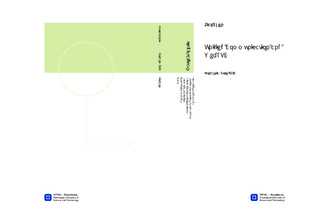| dc.description.abstract | Considering about the research of this thesis and the prototype system, it is clearly that the unified communication service with WebRTC is a promising concept in the telecommunication industry. The functions provided by prototype system will rich the traditional telephony service for users. The objective of this thesis is achieved by the prototype system, the prototype system can provide an unified communication service based on WebRTC and SIP (VoIP).The advantage of prototype system is that it does not require users to install any application client and it is no need for users to have another user credential for this service (prototype system uses telephone number as user credential). Moreover, this unified communication service is server centralized system, it will have more advanced real time communication functions can be implemented on both server side and client side. In this system architecture, there is more space for developers to add more advanced functions and it is easier for scaling for larger user base.Because the prototype system is based on WebRTC, it means that it is highly dependent on web browser client. More advanced concept about unified communication service would be implementing Over the Top real time communication. It will either require the mobile browsers on the smart phones implemented for WebRTC standard or WebRTC can be implemented on different mobile operation platform as native API. Afterwards, there will be more devices can use prototype system to have rich real time communication service between mobile phone users and computer users. Therefore, current application client of the prototype system is based on browser client. The compatible devices which can use the application client are WebRTC supported browsers. Because there are not so many mobile browsers support WebRTC yet, then the user clients to use the prototype application are computer clients only, there are more potential users on the mobile platform.The performance of the prototype system needs to be concerned in the future work because it is hard to evaluate the performance under small group of users and poor server machines. Although the prototype system is not production project, it is still deployed on the public network to test the network issues on the real working scenario. The reason of this thesis implemented prototype system deployment is because there are many feedback about network firewall issues mentioned in other WebRTC web service. It is critical to test the deployment of the prototype system to avoid later big changes for the network architecture because the network problem. The result of the prototype system deployment is verified that the prototype network architecture is a good solution in the working scenario.Furthermore, there is no commercial products to provide unified communication service based on WebRTC and SIP. There are many potential usage of the prototype system integrated with other popular web service in different industry area. And the bridge to connect the web world and telephony work is the prototype system service. The unified communication service will be the big game changing for the web communication and telephony communication business. | nb_NO |

